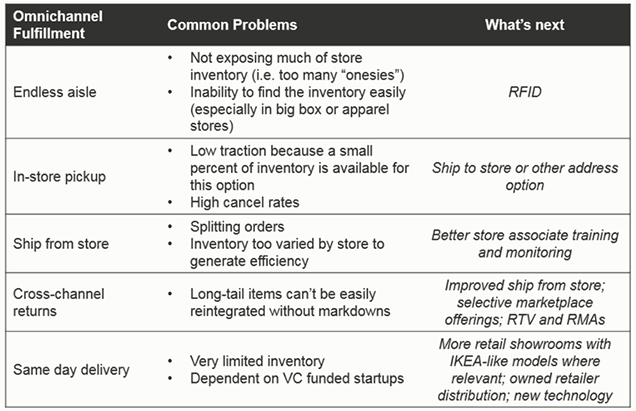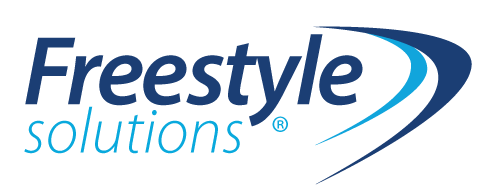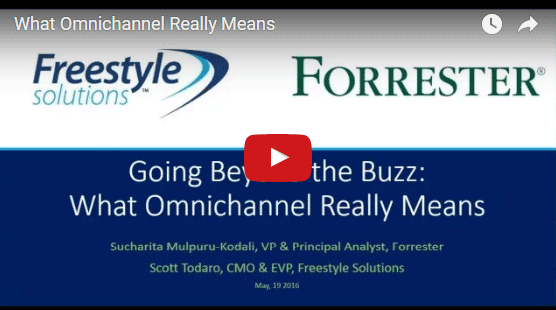This post covers the elements and challenges of creating an omnichannel environment for retailers according to Sucharita Mulpuru-Kodali, VP & Principal Analyst at Forrester Research. Sucharita shared her thoughts in our recent webinar, “Beyond the Buzz What Omnichannel Really Means.”
What Omnichannel Means Today
Omnichannel has meant many things to many people over the years as the term has morphed based on new technologies hitting the retail scene. With this ever evolving landscape, what does omnichannel mean and what are the specific elements of omnichannel today? When talking about omnichannel, retailers are mainly focusing on fulfillment of an order or a transaction in the store. The common fulfillment processes include:
• Buy online, ship to store
• Manage in-store inventory visible online
• Buy in-store, ship to customer from store (endless aisle)
• Buy online, pick up in store
• Ship from store
• Reserve online, pickup in store
Challenges with Omnichannel Fulfillment

The short answer is with legacy systems already in place, getting it all work together is costly and cumbersome. Below are some of the most common challenges that retailers have faced when implementing an omnichannel program.
1. Endless Aisle – the goal of endless aisle is to provide a seamless view of inventory across the retailer and enable the ability to order an out of stock item through a POS or mobile device.
A primary challenge is limited visibility to warehouse and store inventory across the retailer. Another issue that plagues successful endless aisle implementations is the inability to easily locate inventory, reserve it and ship it. This rings true with many apparel and big box retailers.
Ideally, retailers should have systems that expose web distribution centers to stores and the ability to pull an item from another store. An order management system can be the inventory system of record allowing organizations full visibility into company inventory. Unfortunately today, there are still many retailers manually calling to find an item in another store, which is both inefficient and a poor customer experience.
2. In-store pickup – This practice allows shoppers to buy products online and pick-up their orders in stores instead of having them shipped.
The benefit for the retailer is that in-store pick-up drives traffic back into the store and the potential for additional sales. The benefit for the consumer is that they get their product that day, creating a greater level of customer satisfaction.
Retailers always want to move the post profitable inventory, so ROI for this sales channel is dependent on what percent of web inventory is available in store and the where the physical location of store is. Typically, only 50% of a retailers’ web inventory is available in store which can prove challenging for this fulfillment option.
3. Ship from store – This approach offers shipping items from local brick-and-mortar stores to fulfill online orders, instead of from distribution centers miles away.
The benefit of this fulfillment method is selling slow moving products in specific stores that would be targeted for markdown, thereby increasing profit margins.
A key challenge is the splitting of orders, which may increase shipping fees. Retailers that have highly varied inventory have difficulty creating efficiency to ship from store. This model works better for retailers that have consistent inventory. There are several retailers today that ship almost exclusively from stores. This fulfillment process can effective for retailers if their inventory is consistent across stores and they don’t have a large amount of variants or sizes.
4. Cross-channel returns – This practice enables customers to return online purchases in retail stores.
This is one of the best and most compelling aspects of the omnichannel value proposition for customers because they have freedom over the returns process. Customers benefit by getting their payment returned quickly, rather than shipping the item back to the retailer and incurring a delay. The value for retailers is the customer will visit the store and potentially make an additional purchase. Another benefit is using the store to repost the returned item to sell online and use the store as the distribution center.
The challenges include “online only” items being returned to stores and many stores have difficulty putting the returned merchandise on the shelf at full price. This is where having an order management system (OMS) that can be the central repository for inventory, product and order can make a difference. Otherwise, retailers may have to ship the merchandise back to a warehouse or move the item to markdowns.
5. Same-day delivery – This feature offers customers the ability to buy online and have it delivered the same day.
The challenges are similar to in-store pickup. Only a small percentage of a retailers’ online inventory is available for same-day delivery because it will need to be delivered from a local store. The unit economics are extremely high for same day delivery model where costs can run $15-20 for the labor alone. Even though there is excitement around this delivery model, demand is low. Only 10% of customers say they would be willing to pay more than $15 for a same day delivery.
The future may include more IKEA like models and offering more items in stores.




